Herniated disks are a common source of pain and discomfort for many people, especially those who lead sedentary lifestyles or engage in repetitive motions. While traditional medical treatments such as physical therapy, medications, or even surgery may be the first options considered, many individuals are turning towards holistic practices such as yoga for relief. This article explores the nature of herniated disks, the causes, poses to avoid, the potential for permanent treatment, and how yoga can be beneficial in the healing process.
What is a Herniated Disk?
A herniated disk, also known as a slipped or ruptured disk, occurs when the soft inner gel of a spinal disk bulges out through a tear in the tougher exterior. The spine is made up of vertebrae separated by these disks, which act as cushions. When a disk herniates, it can press against nearby nerves, resulting in significant pain, numbness, or weakness in the arms or legs.
Symptoms of a Herniated Disk
The symptoms of a herniated disk vary depending on its location and severity. Common symptoms include:
- Sharp pain in the affected area
- Numbness or tingling in the limbs
- Muscle weakness
- Sciatica (pain that radiates down the leg)
- Limited flexibility or range of motion
What Causes a Herniated Disk?
Several factors can lead to a herniated disk, including:
Age: As people age, the disks lose moisture and elasticity, making them more prone to herniation.
Injury: Sudden trauma from a fall or heavy lifting can cause disks to herniate.
Repetitive Stress: Jobs that involve repetitive motions or heavy lifting can increase the risk.
Genetics: Family history can play a role in the susceptibility to disk problems.
Lifestyle Factors: Obesity, poor posture, and lack of exercise can contribute to the weakening of spinal structures (spinal stenosis).
Yoga Poses for Healing a Herniated Disk
A herniated disk can lead to significant discomfort, affecting your daily life and activities. While traditional treatments—such as medication, physical therapy, or surgery—are often necessary, many people are finding relief and improvement through yoga. Yoga can improve flexibility, strengthen core muscles, and promote better posture, all of which can aid in the healing process. However, it’s crucial to approach yoga mindfully to avoid exacerbating the condition. Below are some specific yoga poses that can be beneficial for individuals dealing with a herniated disk.
Cat-Cow Stretch (Marjaryasana-Bitilasana)
One of the most beneficial poses for spinal health, the Cat-Cow Stretch helps promote flexibility and relieve tension in the spine. This pose encourages the natural movement of the spine, allowing for better circulation and reducing stiffness.
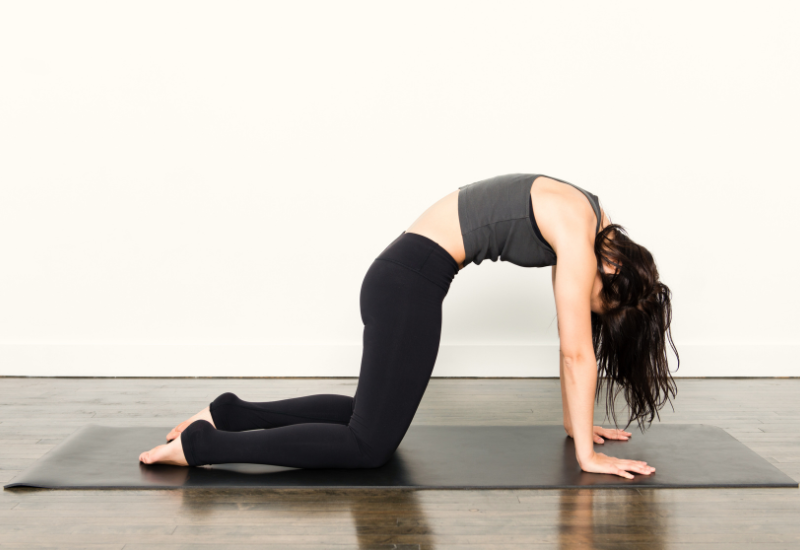
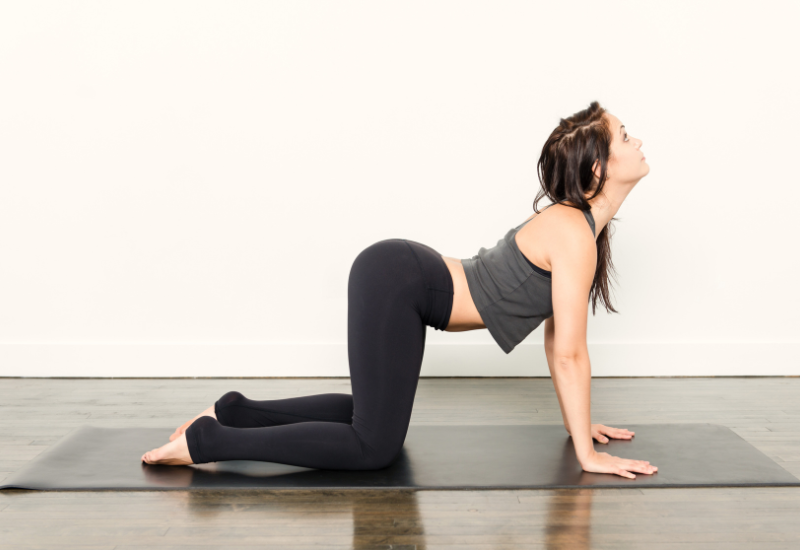
How to Practice:
- Start on your hands and knees in a tabletop position, ensuring your wrists are aligned under your shoulders and your knees under your hips.
- Inhale as you drop your belly toward the mat, lift your head and tailbone towards the sky (Cow Pose).
- Exhale as you round your spine upward, tucking your chin to your chest (Cat Pose).
- Repeat this flowing motion for 5-10 breaths, focusing on the rhythm of your breath.
Child’s Pose (Balasana)
Child’s Pose is a restorative pose that helps stretch the spine and relax the muscles. It encourages gentle elongation of the back, providing relief from tension.
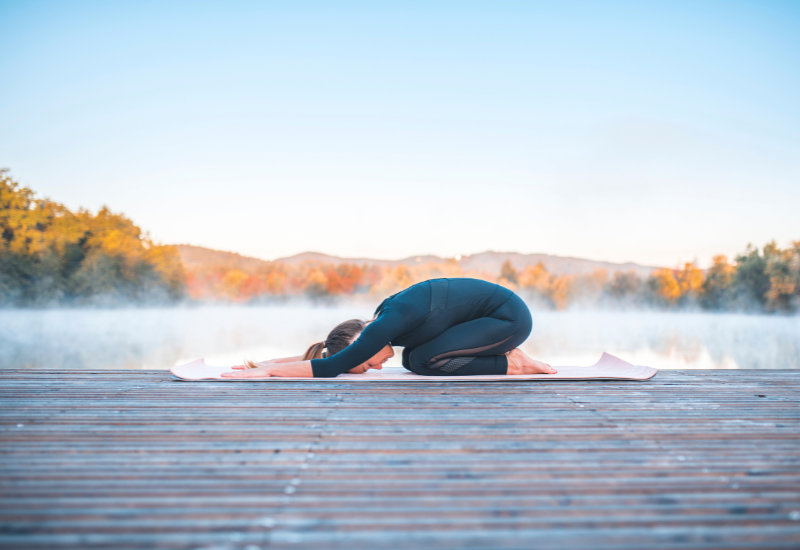
How to Practice:
- Kneel on the mat and sit back on your heels.
- Extend your arms forward on the floor, allowing your forehead to come down to the mat.
- Relax your shoulders and sides, feeling the stretch along your spine.
- Hold this pose for 30 seconds to a few minutes, focusing on your breath.
Bridge Pose (Setu Bandhasana)
Bridge Pose is great for strengthening the lower back, glutes, and core muscles. It also opens the chest and promotes proper alignment of the spine.
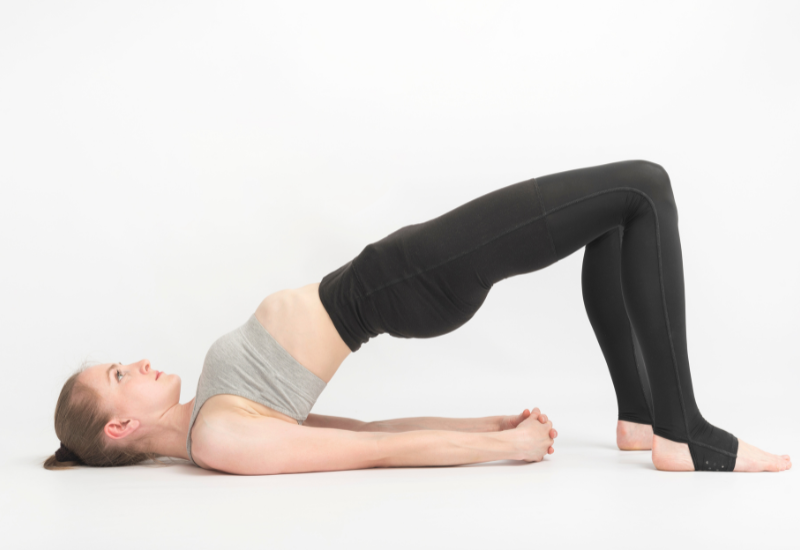
How to Practice:
- Lie on your back with your knees bent and feet flat on the floor, hip-width apart.
- Press your feet into the ground and lift your hips toward the ceiling, forming a straight line from your shoulders to your knees.
- Keep your shoulders relaxed and away from your ears, interlacing your fingers under your back for support if comfortable.
- Hold for 20-30 seconds, breathing deeply, then slowly lower your hips back to the ground.
- Repeat this two to three times.
Reclined Spinal Twist (Supta Matsyendrasana)
This gentle twist can help relieve tension in the spine and improve mobility. It allows for gentle stretching and promotes relaxation in the back muscles.
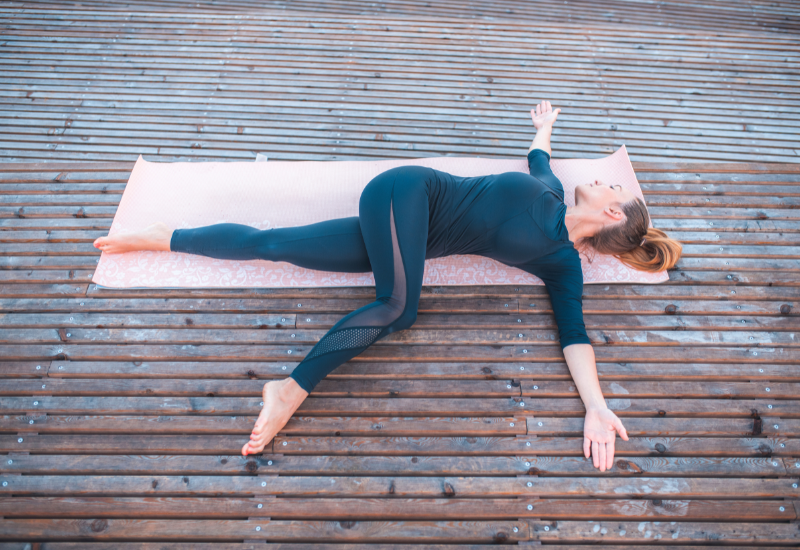
How to Practice:
- Lie on your back, bend your knees planting your feet on the floor.
- Lift your hips slightly off the floor and and shift them a few inches to the right
- Exhale and cross youe right knee over to the left side of yopur body, in a way that your right hip is stacked on top of your left hip.
- Extend your arms out to the sides in a T position and turn your head to the right.
- Keep your shoulders grounded.
- Hold this position for 30 seconds to a minute. To come out of the position, roll on to your back, drawing your right knee into your chest. Now release both the legs to the floor to neutralize your spine. Stay here for a few breaths before switching side.
Knees-to-Chest Pose (Apanasana)
Knees-to-Chest Pose helps lengthen and relax the lower back while providing a gentle stretch.
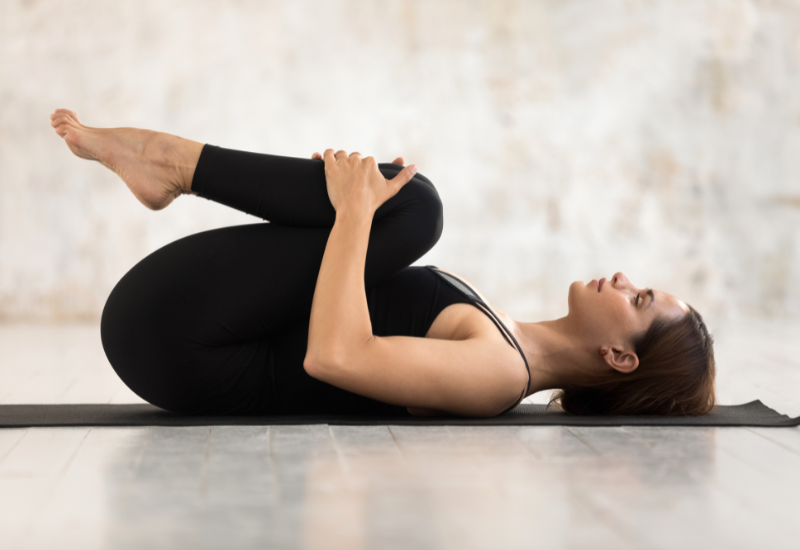
How to Practice:
- Lie on your back and hug your knees toward your chest.
- Hold onto your shins or thighs and gently rock side to side if it feels comfortable.
- Focus on drawing your knees as close to your chest as possible while keeping your shoulders relaxed.
- Hold for 30 seconds to a minute.
- If comfortable you can do this a couple of times.
Cobra Pose (Bhujangasana)
Cobra pose can promote spinal extension and help strengthen the lower back when practiced gently.
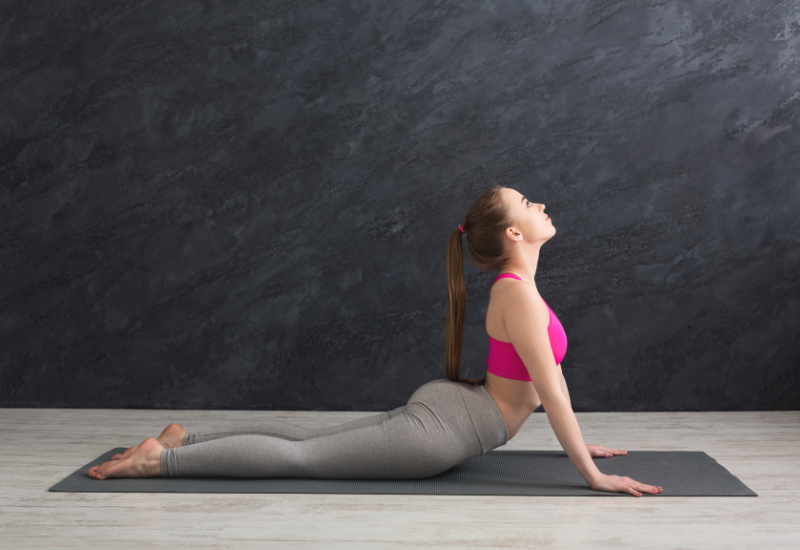
How to Practice:
- Lie face down on your mat with your hands under your shoulders.
- Inhale and as you exhale press your palms into the mat and gently lift your chest off the ground, keeping your elbows slightly bent and your pelvis grounded.
- Avoid straining your lower back; engage your abdominal muscles to protect the spine.
- Hold for 15-30 seconds, breathing deeply.
Additional Tips for Practicing Yoga with a Herniated Disk
Consult a Healthcare Professional:
Before starting any yoga routine, especially with a herniated disk, consult a healthcare provider or physical therapist to assess your specific situation.
Focus on Alignment:
Proper alignment is crucial in all poses to avoid further injury. Pay attention to how your body feels in each pose and make adjustments as necessary.
Use Props:
If you find any pose challenging, use props such as blocks, straps, or bolsters for support. These can help you maintain proper form without straining your back.
Listen to Your Body:
Yoga should not be painful. If you feel sharp pain or discomfort in any pose, ease out of it immediately. Modify or skip poses that do not feel right.
Start Slow and Gradually Increase:
Begin with shorter sessions focusing on gentle poses, gradually increasing both the duration and complexity of your practice as you gain strength and confidence.
Incorporate Breathing Techniques:
Practicing pranayama (breath control) can enhance relaxation and body awareness, both of which are beneficial for healing.
Takeaway
Incorporating yoga into your recovery strategy for a herniated disk can be a valuable tool for enhancing flexibility, strength, and overall spine health. While yoga is not a substitute for medical treatment, it can be an effective complement when done mindfully. Always remember to consult with a healthcare provider and listen to your body as you explore these poses. With patience and consistent practice, yoga can significantly aid in your journey toward healing.


